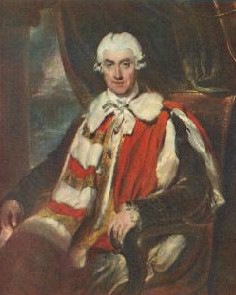Thomas Thynne, 1st Marquess of Bath facts for kids
Quick facts for kids
The Most Honourable
The Marquess of Bath
|
|
|---|---|

Portrait by Thomas Lawrence
|
|
| Secretary of State for the Northern Department | |
| In office 7 March 1779 – 27 October 1779 |
|
| Monarch | George III |
| Prime Minister | Lord North |
| Preceded by | The Earl of Suffolk |
| Succeeded by | The Viscount Stormont |
| In office 20 January 1768 – 21 October 1768 |
|
| Monarch | George III |
| Prime Minister | |
| Preceded by | Henry Seymour Conway |
| Succeeded by | The Earl of Rochford |
| Secretary of State for the Southern Department | |
| In office 9 November 1775 – 24 November 1779 |
|
| Monarch | George III |
| Prime Minister | Lord North |
| Preceded by | The Earl of Rochford |
| Succeeded by | The Earl of Hillsborough |
| In office 21 October 1768 – 12 December 1770 |
|
| Monarch | George III |
| Prime Minister | The Duke of Grafton Lord North |
| Preceded by | The Earl of Shelburne |
| Succeeded by | The Earl of Rochford |
| Lord Lieutenant of Ireland | |
| In office 5 June 1765 – 7 August 1765 |
|
| Monarch | George III |
| Preceded by | The Earl of Northumberland |
| Succeeded by | The Earl of Hertford |
| Personal details | |
| Born |
The Hon. Thomas Thynne
13 September 1734 |
| Died | 19 November 1796 (aged 62) St George Hanover Square, Westminster, Middlesex, England |
| Political party | Tory |
| Spouse | |
| Children | 6, including:
|
| Parents |
|
| Residence | Longleat |
| Alma mater | St John's College, Cambridge |
| Occupation | Politician |
Thomas Thynne, the 1st Marquess of Bath, was an important British politician. He was born on September 13, 1734, and passed away on November 19, 1796. He lived at Longleat in Wiltshire, England.
He held several key jobs under King George III. These included being the Secretary of State for both the Southern and Northern Departments, and also the Lord Lieutenant of Ireland. For many years, from 1751 to 1789, he was known as the 3rd Viscount Weymouth. He is especially remembered for his part in the Falklands Crisis in 1770.
Contents
Early Life and Family History
Thomas Thynne was born on September 13, 1734. He was the oldest son of Thomas Thynne, the 2nd Viscount Weymouth. His mother was Louisa Carteret.
The Thynne Family Story
The Thynne family comes from Sir John Thynne (around 1515–1580). He was the person who built Longleat House, which is the family's main home in Wiltshire. Sir John became very rich and important after the Dissolution of the Monasteries. He worked for the future Queen Elizabeth I of England.
Another famous person in the family was Thomas Thynne (1648–1682). He was known as "Tom of Ten Thousand" because he was so wealthy.
Political Career Highlights
Thomas Thynne became the 3rd Viscount Weymouth in January 1751 after his father passed away.
He briefly served as the Lord Lieutenant of Ireland in 1765. This job meant he was the King's representative in Ireland, but he never actually visited the country.
Secretary of State Roles
In January 1768, he became the Secretary of State for the Northern Department. He acted quickly during problems caused by John Wilkes and the election in Middlesex that year. Wilkes then attacked him with false accusations, and as a result, Wilkes was removed from the House of Commons.
Later in 1768, he moved to become the Secretary of State for the Southern Department. He resigned from this role in December 1770 during the "Falklands Crisis". This was a disagreement with Spain about who owned the Falkland Islands.
During the American War
In November 1775, Weymouth returned to his job as Secretary of State for the Southern Department. For a few months in 1779, he also took on the duties of the Northern Department. He left both positions in the autumn of that year. This time period included the American War of Independence.
Later Years and Legacy
From 1781 until his death in November 1796, he was the High Steward of the Royal Town of Sutton Coldfield. In 1789, he was given the new title of Marquess of Bath. The title of Earl of Bath was already being used by another family at that time.
Weymouth Street in Marylebone, London, is named after him. His wife's family used to own the land where the street was later built.
Marriage and Children
In 1759, Thomas Thynne married Lady Elizabeth Bentinck. She was the daughter of the 2nd Duke of Portland. They had three sons and five daughters together, including:
- Lady Louisa Thynne (born 1760)
- Lady Henrietta Thynne (born 1762)
- Lady Sophia Thynne (born 1763)
- Thomas Thynne, 2nd Marquess of Bath (1765–1837), who was his oldest son and inherited his titles.
- Lady Maria Thynne (born 1767, died 1768)
- Lady Isabella Thynne (born 1768)
- George Thynne, 2nd Baron Carteret (1770–1838), who later inherited the title Baron Carteret.

